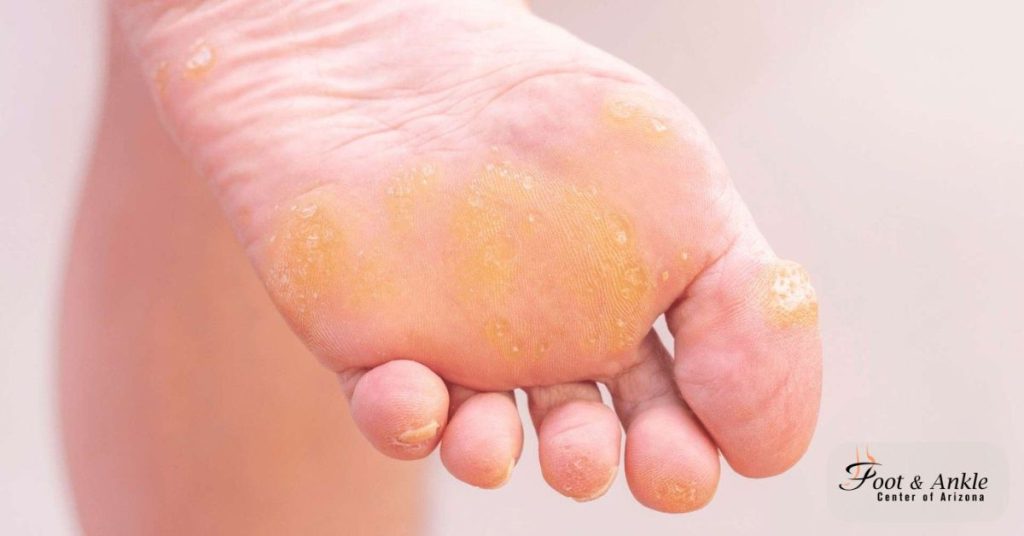Corns
Corn is a small circular thickened lesion in the skin of the foot. It usually forms due to repeated pressure on the skin, such as the rubbing of a shoe. The name “corn” comes from its resemblance to a kernel of corn. A corn is different from a callus in that it has a central core of hard material.
People with foot deformities, such as hammertoes, often suffer from corns because the tops of the bent toes rub against the tops of shoes.
There are a number of treatment options.
When corns get hard enough to cause pain, a foot and ankle surgeon will recommend the treatment option most appropriate for you. However, if the underlying cause of the corn is not treated or removed, the corn may return. It is important to avoid trying to remove a corn at home or using medicated corn pads, as serious infection may occur.
https://www.foothealthfacts.org/what-is/nscorns.htm
Corns and calluses
with a hard center that is surrounded by swollen skin. They can be painful when they are pressed. Hard typically form on the top of toes or the outer edge of the small toe, while soft corns usually form in between toes.
are common skin lesions in which there is a localised area of thickened skin. A corn (clavus, heloma) is inflamed and painful. They are known as ‘soft corns’ (heloma molle) if the surface skin is damp and peeling, for example between toes that are squashed together. A callus (tyloma) is an area of painless hard skin.
It may be helpful to visit a podiatrist for treatment of calluses and corns on the feet. Sometimes protruding bone has to be surgically removed by an foot and ankle surgeon, for example bunion repair.
Symptoms
Signs and symptoms of corns and calluses include:
1. A thick, rough area of skin
2. A hardened, raised bump
3. Tenderness or pain under the skin
Flaky, dry or waxy skinxy
https://www.dermnetnz.org/scaly/corns.html




